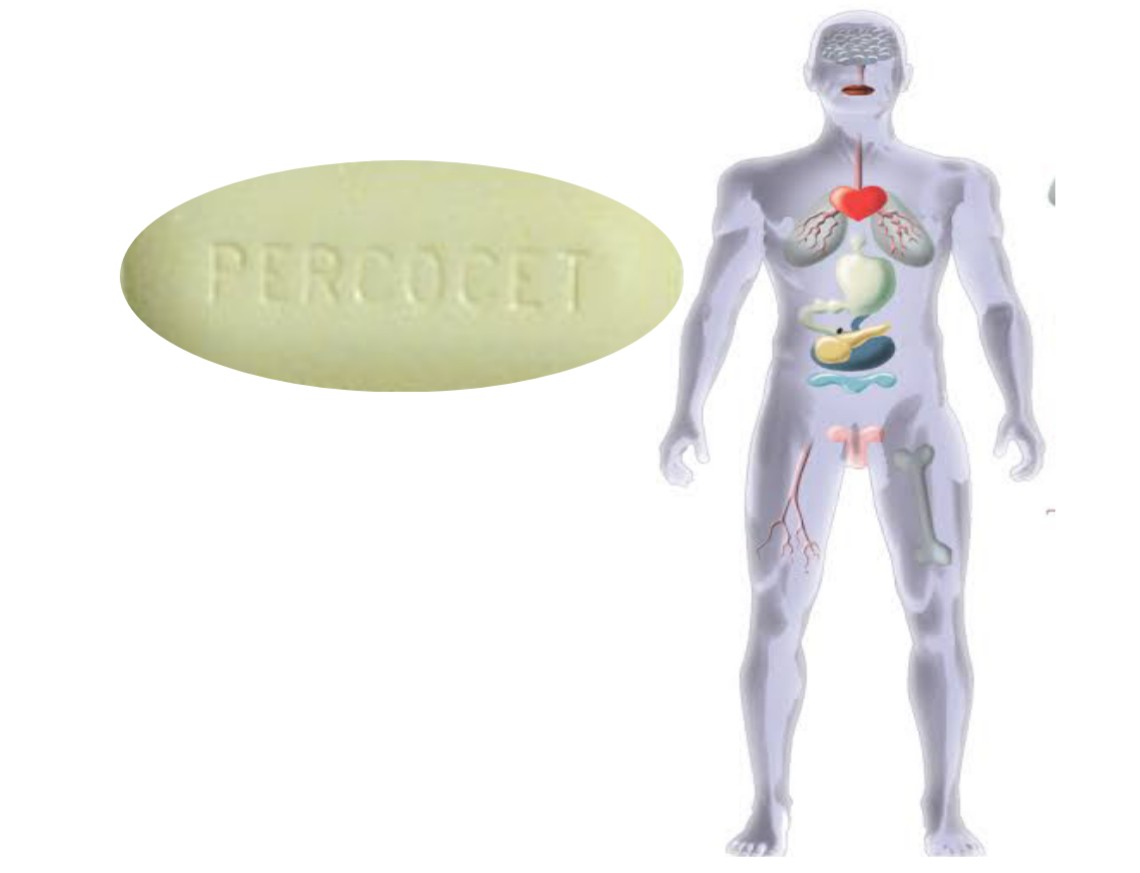Percocet (oxycodone and acetaminophen) is a combination drug consisting of an opioid, a pain reliever, and a fever reducer (analgesic and antipyretic) used for the management of moderate to severe pain, usually for an extended time period. Percocet is also available in generic form.
Percocet is a prescription medicine and may cause serious or life-threatening breathing problems, especially during the first 24 to 72 hours of treatment and any time your dose is increased due to its Oxycodone content. Acetaminophen the other component of this drug has been associated with cases of acute liver failure, at times resulting in liver transplant and death. Most cases of liver injury are associated with the use of acetaminophen at doses that exceed 4000 milligrams per day and often involve more than one acetaminophen-containing product.
How Long Does Percocet Stay In Your System?
Percocet affects every person differently. The drug you use (strength, dose, how and how often you use it, and other drugs) can affect how long it stays in your system. It can also be affected by you as an individual depending on your tolerance, age, gender, overall health, metabolism, mood, and environment you are in.
People who utilize oxycodone-containing pills like Percocet may wonder how long the drug shows up on drug tests. Because the half-life of oxycodone is only a few hours and the drug may completely leave the system within a day, some people believe that a day after they last took oxycodone, they’ll be able to pass an oxycodone drug test. But what determines the length of time that a drug test detects traces of a drug has more to do with the drug’s metabolites (i.e., what the drug metabolizes into), than the drug’s half-life.
So even though oxycodone itself isn’t present in your body, it metabolizes into noroxycodone, noroxycodol, oxymorphone, and oxymorphol among others, which can linger after their original forms vanish. The metabolites appear more in certain components of the body than in others, resulting in different trace windows per test type.
Factors That Affect How Long Oxycodone Stays In The System
The amount of time it takes for oxycodone to leave the body depends on several factors. For example, if you’re young and healthy, the way your body absorbs and processes oxycodone is different than how the body of a senior who has poor physical health processes the drug.
Factors in determining how long oxycodone stays in your system include:
Oxycodone and Weight
A person who is obese will likely have oxycodone in their system longer than someone who weighs less will.
Generally, people who are overweight process drugs slower than people who weigh less because overweight people tend to have slower metabolic rates. Obese individuals often suffer from chronic pain due to various physical conditions that develop due to their weight gain. Opioids may already be utilized to treat some of those painful issues. If so, their body may be partially used to the presence of opioids when oxycodone is used, thus more opioids may be needed due to the individual’s opioid tolerance.
Age and Organ Function Affect Oxycodone Processing
Most opioids come with a warning for individuals with liver conditions. Liver enzymes help to metabolize oxycodone, so if liver problems are present, it may take the body longer to excrete the drug. Specific enzymes in the liver help metabolize oxycodone, so people with higher stores of these enzymes can eliminate oxycodone from their system faster.
Usually, younger people have higher metabolic rates, which can impact the elimination of oxycodone. Older people generally aren’t able to excrete drugs as quickly as younger people, possibly due to reduced liver function, as well as the potential for other health problems that can slow down metabolism.
How Long Oxycodone Lasts by MG
It’s best for individuals to consult with their primary care provider to determine how long certain doses of oxycodone will last in their system. Because of the many factors that contribute to how long oxycodone stays in your system, doctors can check your prescription with any pre-existing factors like liver health and age to be as accurate as possible.
For example, OxyContin, a brand name of Oxycodone, comes in 10 mg, 15 mg, 20 mg, 30 mg, 40 mg, 60 mg, and 80 mg tablets. A doctor can help patients determine which amount is right for them and help patients determine how long the drug remains in their system.
What Is the Half-Life of Oxycodone?
The half-life of oxycodone refers to the amount of time it takes half the drug to be eliminated from your body. The oxycodone half-life is anywhere from 3.5 to 5.5 hours. This means that, on average, the medication will usually be eliminated from the body within 20 hours. However, with opioids like oxycodone, there are often lingering metabolites that may be present and detectable in your system for longer.
The half-life of oxycodone and how long it takes to be fully eliminated from the body are based not only on the features of the drug but also on the characteristics of the individual taking it. For example, the functionality of the kidneys and liver can play a role because oxycodone is metabolized there. Younger people tend to metabolize oxycodone more quickly. Bodyweight and fat content can make a difference as well.
Other individual features that can determine oxycodone half-life may include metabolic rate, the pH of urine, and how often a person takes it. If you take oxycodone frequently, it may take longer for it to be eliminated because it builds up in your body.
Oxycodone and Urine
Urine tests can reveal oxycodone use for approximately three to four days following the latest use. Oxycodone may first show up in urine within a couple of hours following consumption.
Oxycodone and Hair
Oxycodone can be detected in hair for approximately 90 days after the latest use, but it takes approximately one week to appear in a person’s hair following the latest use.
Oxycodone and Blood
Oxycodone use can be detected in the blood for approximately one day (24 hours) after the latest use. The drug is present in the bloodstream within 15 to 30 minutes following the most recent use.
Oxycodone and Saliva
A saliva test can reveal traces of oxycodone for up to four days following the latest use. Oxycodone can be detected in saliva within 15 minutes of the latest use.






